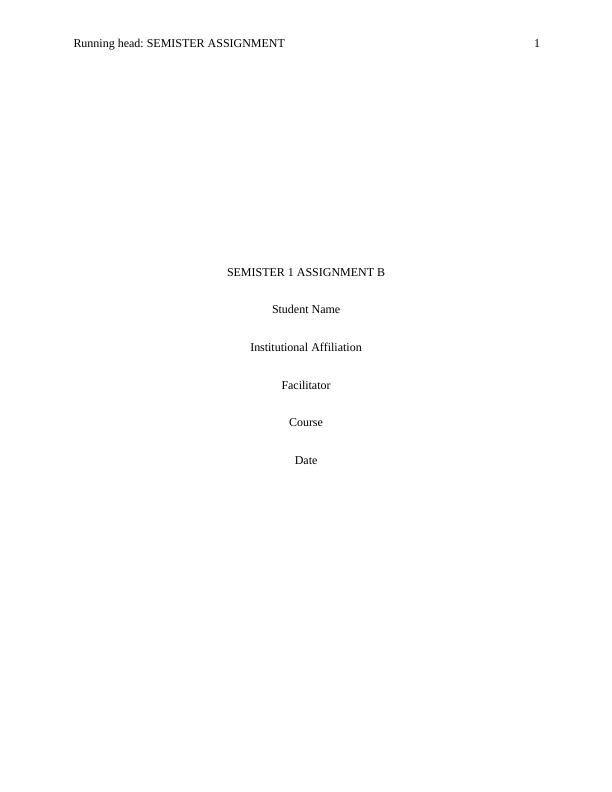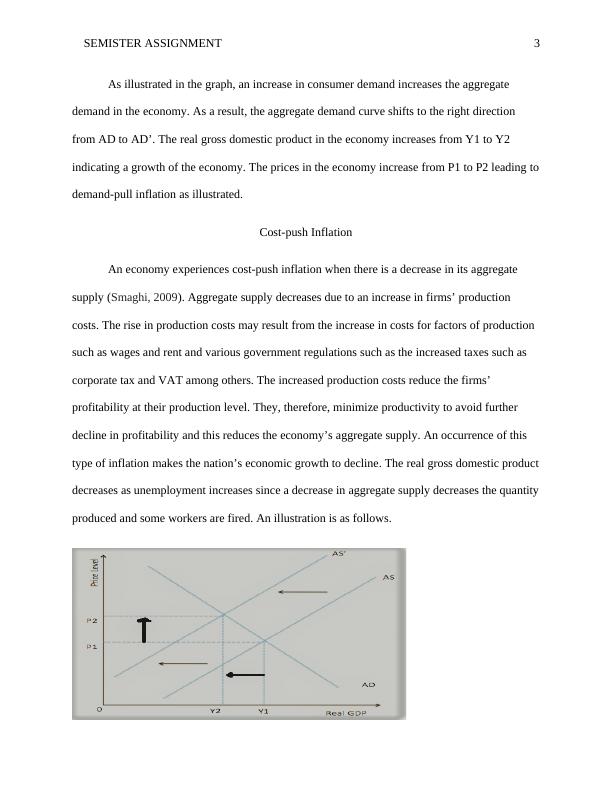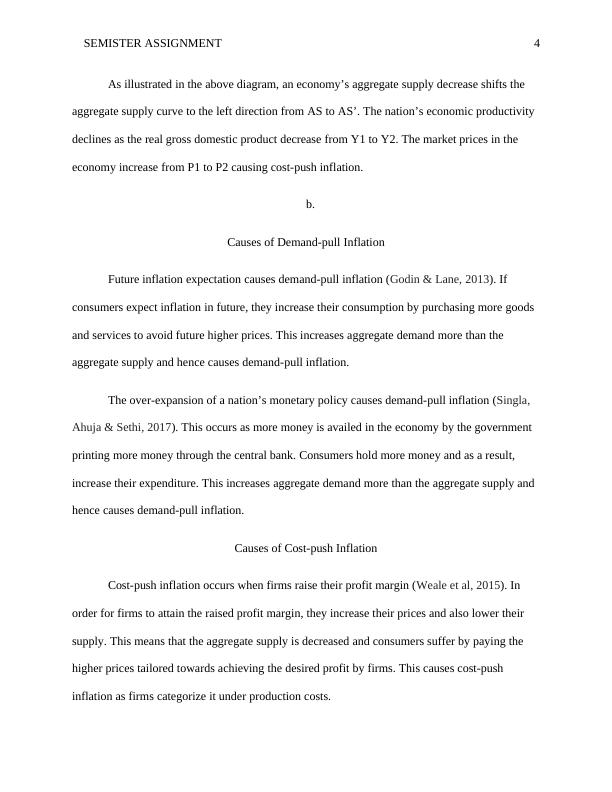Causes and Effects of Demand-pull and Cost-push Inflation
Answer any five (5) of the following eight (8) questions in Macroeconomics.
14 Pages2169 Words279 Views
Added on 2023-04-04
About This Document
This document discusses the causes and effects of demand-pull and cost-push inflation in the economy. It explains how demand-pull inflation occurs when aggregate demand outpaces aggregate supply, and how cost-push inflation occurs when aggregate supply decreases due to increased production costs. The document also explores the factors that contribute to each type of inflation. Additionally, it examines the impact of inflation on different parties, such as borrowers and lenders, and explains how inflation can be managed through monetary policies.
Causes and Effects of Demand-pull and Cost-push Inflation
Answer any five (5) of the following eight (8) questions in Macroeconomics.
Added on 2023-04-04
ShareRelated Documents
End of preview
Want to access all the pages? Upload your documents or become a member.
Difference between Demand-Pull and Cost-Push Inflation
|16
|3283
|85
Macroeconomics Practice Questions and Answers
|8
|1387
|437
Macroeconomics: Demand-Pull and Cost-Push Inflation, Keynesian-Monetarist Controversy, Impact on AD-AS, Banks and Money Creation
|11
|1471
|471
Assignment on Macro Economic
|13
|2805
|345
Macroeconomics: Assignment B
|11
|1813
|48
Demand-pull and Cost-push Inflation
|14
|2713
|386




